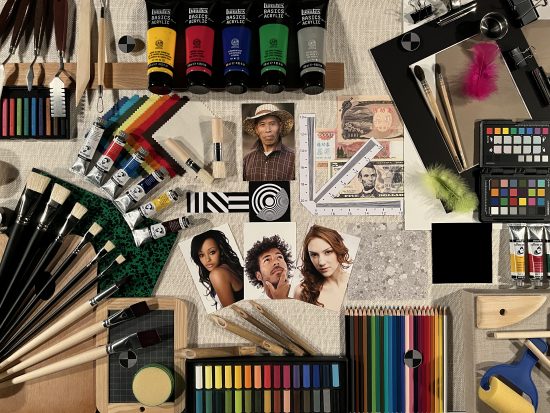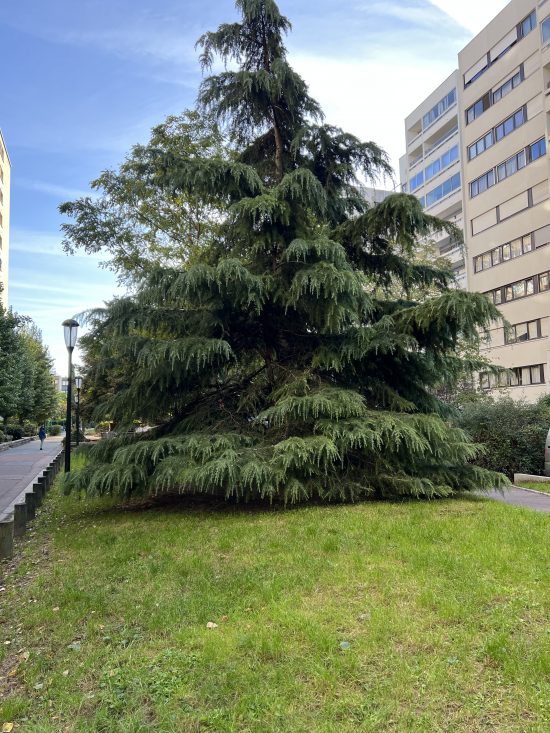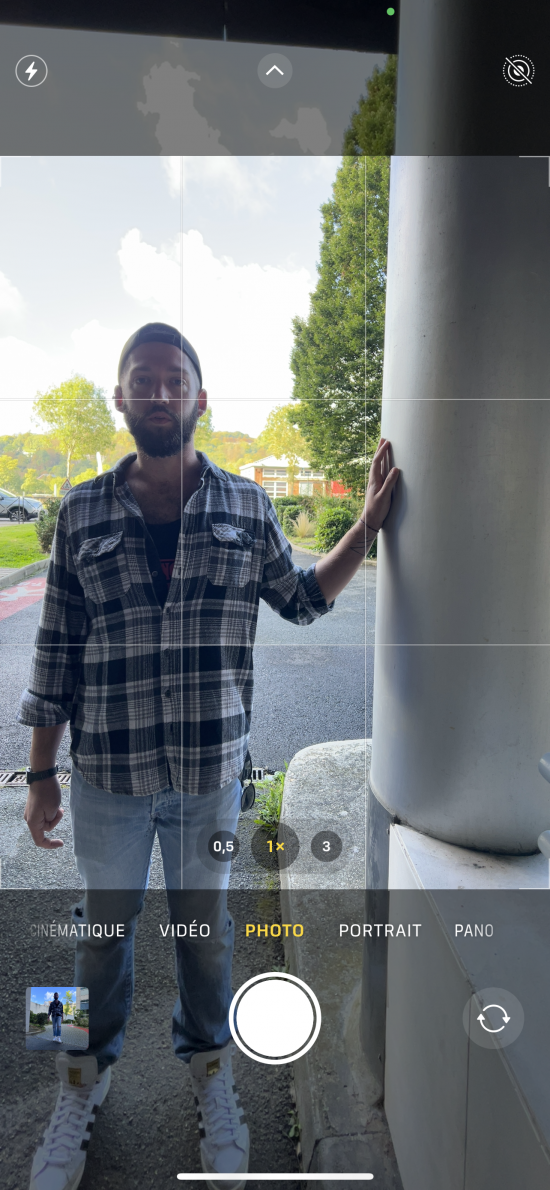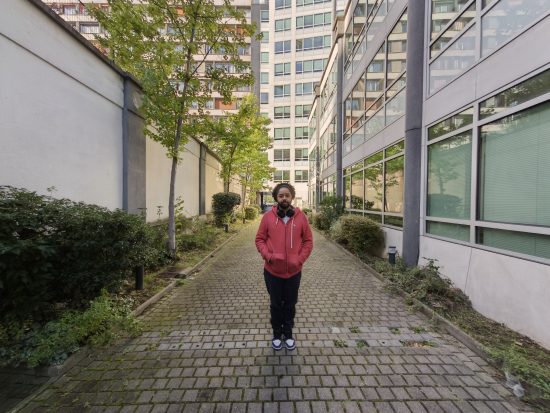The Pixel 6 Pro is the 2021 flagship in Google’s Pixel line of smartphone, featuring a 6.7-inch OLED LTPO display with 120Hz refresh rate and QHD+ resolution, Google’s brand new in-house-developed Tensor chipset and up to 512GB of ROM.
It is also the first Pixel phone to feature a triple camera with ultra-wide and tele modules accompanying the primary shooter. At 1/1.31″ the image sensor in the latter is almost twice the size of its equivalent in the Pixel 5 generation and offers a 50 MP resolution that is downsampled to 12.5 MP for the final output image. Landscape photographers and other wide-angle shooters can rely on an ultra-wide module with a 16mm-equivalent field of view, and a 4x tele lens allows you to zoom into your subjects from a distance.
Let’s see how the Google Pixel 6 Pro performed in the DXOMARK Camera test.
Key camera specifications:
- Primary: 50 MP 1/1.31″ sensor, 1.2µm pixels, 24 mm equivalent f/1.85-aperture lens, OIS, Dual PDAF
- Ultra-wide: 12.5 MP 1/2.86″ sensor, 1.25μm pixels, 16mm equivalent f/2.2-aperture lens
- Tele: 48 MP 1/2.0″ sensor, 0.80μm pixels, 102.6mm equivalent (4x) f/3.5-aperture lens, OIS, PDAF
- LDAF (laser detection autofocus) sensor
- LED Flash
- 4K at 30/60fps (4K/30fps tested)
Test summary
About DXOMARK Camera tests: DXOMARK’s Camera evaluations take place in laboratories and in real-world situations using a wide variety of subjects. The scores rely on objective tests for which the results are calculated directly by measurement software on our laboratory setups, and on perceptual tests in which a sophisticated set of metrics allow a panel of image experts to compare aspects of image quality that require human judgment. Testing a smartphone involves a team of engineers and technicians for about a week. Photo, Zoom, and Video quality are scored separately and then combined into an Overall score for comparison among the cameras in different devices. For more information about the DXOMARK Camera protocol, click here. More details on smartphone camera scores are available here. The following section gathers key elements of DXOMARK’s exhaustive tests and analyses. Full performance evaluations are available upon request. Please contact us on how to receive a full report.
Scoring
Sub-scores and attributes included in the calculations of the global score.
Google Pixel 6 Pro


Use cases & Conditions
Use case scores indicate the product performance in specific situations. They are not included in the overall score calculations.
Outdoor
Photos & videos shot in bright light conditions (≥1000 lux)
Indoor
Photos & videos shot in good lighting conditions (≥100lux)
Lowlight
Photos & videos shot in low lighting conditions (<100 lux)
Friends & Family
Portrait and group photo & videos
 15th
15th
 14th
14th
Pros
- Good detail in bright light and indoor images, as well as in video
- Good shadow detail and contrast
- Nice and accurate color in photo and video
- Fast and accurate autofocus in bright light and indoor conditions
- Excellent detail in long range tele shots
- Effective video stabilization
- Good exposure and wide dynamic range in video
Cons
- Narrow depth of field results in blurry background subjects in group shots
- Noise in indoor and low-light images
- Depth estimation errors and instabilities in bokeh shots
- Bokeh blur effect not visible in preview
- Ultra-wide camera not as wide as competition
- Color instabilities and noise in video
- Occasionally unstable video autofocus in low light
Overall the new Google phone delivers an outstanding Photo performance and great Video quality. Thanks to the introduction of the new 4x tele lens it also does very well in the Zoom category. Compared to one of its main rivals, the Apple iPhone 13 Pro Max, Photo and Zoom are on par but with different characteristics. The Pixel is ahead in terms of exposure and texture. The iPhone does better for some other categories, such as preview or autofocus. For Video the Pixel 6 Pro still slightly lags behind the iPhone, especially in terms of capturing high-contrast scenes, something that the iPhone 13 Pro Max excels at.
The excellent Photo score is based on a consistently good performance across all still image test categories. On the Pixel 6 Pro Google paid particular attention to contrast as well as portrait quality and skin tones and overall the camera is very reliable and a big step forward from previous Pixel models that had to rely on smaller sensors and less processing power. Still images show good exposure, with only some slight underexposure in difficult backlit scenes. The camera also delivers very high level of details in outdoor and indoor conditions but noise is often visible when shooting under indoor lighting or in low light. The autofocus works reliably in most conditions, too, but the large sensor of the primary module means that depth of field is quite limited, blurring subjects that are located behind the focal plane.
In terms of the Zoom score the Pixel 6 Pro mainly benefits from the 4x tele camera that delivers great results at long range, although the level of detail suffers at shorter zoom settings. Compared to the best in class the ultra-wide camera comes with some limitations, however. At 16mm-equivalent, the field of view is not very wide, the level of detail could be better and our engineers also observed some noise and exposure instabilities. On the plus side, anamorphosis is well corrected.
The Video score puts the Pixel 6 Pro into the top ten for this category as well. Video clips benefit from a wide dynamic range and good exposure in most conditions. Colors are nice in most situations and the level of detail is high, especially when shooting in bright light. The autofocus works mostly accurately, except in low light where failures can occur. The Pixel’s stabilization system does a good job at keeping things steady and even when running or walking while recording only some slight shake is noticeable. On the downside, noise as well as exposure and white balance instabilities can be noticeable in some situations.
Photo
Google Pixel 6 Pro
152
For scoring and analysis, DXOMARK engineers capture and evaluate more than 2,600 test images both in controlled lab environments and in outdoor, indoor and low-light natural scenes, using the camera’s default settings. The photo protocol is designed to take into account the main use cases and is based on typical shooting scenarios, such as portraits, family, and landscape photography. The evaluation is performed by visually inspecting images against a reference of natural scenes, and by running objective measurements on images of charts captured in the lab under different lighting conditions from 1 to 1,000+ lux and color temperatures from 2,300K to 6,500K.

Exposure
Google Pixel 6 Pro
117
Exposure is one of the key attributes for technically good pictures. The main attribute evaluated is the brightness of the main subject through various use cases such as landscape, portrait, or still life. Other factors evaluated are the contrast and the dynamic range, eg. the ability to render visible details in both bright and dark areas of the image. Repeatability is also important because it demonstrates the camera's ability to provide the same rendering when shooting several images of the same scene.
These samples show the Google Pixel 6 Pro’s exposure performance in a backlit scene.
This graph shows the Google Pixel 6 Pro’s average contrast entropy in lab conditions.

Color
Google Pixel 6 Pro
119
Color is one of the key attributes for technically good pictures. The image quality attributes analyzed are skin-tone rendering, white balance, color shading, and repeatability. For color and skin tone rendering, we penalize unnatural colors but we respect a manufacturer's choice of color signature.
Note that even though the Google Pixel 6 Pro does an excellent job color-wise in most conditions, a slight cast can be visible on occasion. These samples show the Google Pixel 6 Pro’s color performance in outdoor conditions.
These samples show the Google Pixel 6 Pro’s color performance in indoor conditions.
These samples show the Google Pixel 6 Pro’s color performance in low light.

Autofocus
Google Pixel 6 Pro
116
Autofocus tests concentrate on focus accuracy, focus repeatability, shooting time delay, and depth of field. Shooting delay is the difference between the time the user presses the capture button and the time the image is actually taken. It includes focusing speed and the capability of the device to capture images at the right time, what is called 'zero shutter lag' capability. Even if a shallow depth of field can be pleasant for a single subject portrait or close-up shot, it can also be a problem in some specific conditions such as group portraits; Both situations are tested. Focus accuracy is also evaluated in all the real-life images taken, from infinity to close-up objects and in low light to outdoor conditions.
This graph shows the Google Pixel 6 Pro’s autofocus performance in the lab in outdoor high dynamic range conditions (1000 lux, 4EV, handheld).
These samples show the Google Pixel 6 Pro’s autofocus and depth of field in outdoor conditions. The lack of a variable aperture (as you would have on most dedicated cameras) makes depth of field in this kind of scene a challenge for almost all current ultra-premium devices.

Texture
Google Pixel 6 Pro
114
Texture tests analyze the level of details and the texture of subjects in the images taken in the lab as well as in real-life scenarios. For natural shots, particular attention is paid to the level of details in the bright and dark areas of the image. Objective measurements are performed on chart images taken in various lighting conditions from 1 to 1000 lux and different kinds of dynamic range conditions. The charts used are the proprietary DXOMARK chart (DMC) and the Dead Leaves chart.
These samples show the Google Pixel 6 Pro’s texture performance in daylight conditions.
The fine detail preservation in the real-life scene above can also be seen and measured in the lab. This graph shows the Google Pixel 6 Pro’s texture performance compared to the competition in the lab across varying light levels. We measure texture on various crops of our perceptual test scenes. The Pixel 6 Pro’s results mounted on a tripod are very high but lower handheld which is more relevant to most users.
This sample shows the Google Pixel 6 Pro’s texture performance in low light in the lab.

Noise
Google Pixel 6 Pro
115
Noise tests analyze various attributes of noise such as intensity, chromaticity, grain, structure on real-life images as well as images of charts taken in the lab. For natural images, particular attention is paid to the noise on faces, landscapes, but also on dark areas and high dynamic range conditions. Noise on moving objects is also evaluated on natural images. Objective measurements are performed on images of charts taken in various conditions from 1 to 1000 lux and different kinds of dynamic range conditions. The chart used is the Dead Leaves chart and the standardized measurement such as Visual Noise derived from ISO 15739.
This graph shows the Google Pixel 6 Pro’s noise performance in the lab across light levels.
These samples show the Google Pixel 6 Pro’s noise performance in indoor conditions.

Artifacts
Google Pixel 6 Pro
81
The artifacts evaluation looks at lens shading, chromatic aberrations, geometrical distortion, edges ringing, halos, ghosting, quantization, unexpected color hue shifts, among others type of possible unnatural effects on photos. The more severe and the more frequent the artifact, the higher the point deduction on the score. The main artifacts observed and corresponding point loss are listed below.
This image shows an example of color fringing on the Google Pixel 6 Pro. Overall, most common artifacts are well corrected but color fringing and aliasing are often visible. Please also note the cold white balance cast in this image.
Bokeh
Google Pixel 6 Pro
80
Bokeh is tested in one dedicated mode, usually portrait or aperture mode, and analyzed by visually inspecting all the images captured in the lab and in natural conditions. The goal is to reproduce portrait photography comparable to one taken with a DLSR and a wide aperture. The main image quality attributes paid attention to are depth estimation, artifacts, blur gradient, and the shape of the bokeh blur spotlights. Portrait image quality attributes (exposure, color, texture) are also taken into account.
On the Google Pixel 6 Pro’s bokeh shots, the level of detail in sharp areas is very high and higher than on the comparison devices. This is especially nice for portrait shots where the sharpness of the subject contrasts nicely with the background blur that has a nice shape to it. These samples show the Google Pixel 6 Pro’s bokeh simulation in daylight.
Preview
Google Pixel 6 Pro
91
Preview tests analyze the image quality of the camera app's preview of the image, with particular attention paid to the difference between the capture and the preview, especially regarding dynamic range and the application of the bokeh effect. Also evaluated is the smoothness of the exposure, color and focus adaptation when zooming from the minimal to the maximal zoom factor available. The preview frame rate is measured using the LED Universal Timer.
These images show the Google Pixel 6 Pro’s preview performance in HDR conditions.
These images show the Google Pixel 6 Pro’s preview performance in bokeh mode.
Zoom
Google Pixel 6 Pro
151
DXOMARK engineers capture and evaluate over 400 test images in controlled lab environments and in outdoor, indoor, and low-light natural scenes, using the camera’s default settings and pinch zoom at various zoom factors from ultra wide to very long-range zoom. The evaluation is performed by visually inspecting the images against a reference of natural scenes, and by running objective measurements of chart mages captured in the lab under different conditions from 20 to 1000 lux and color temperatures from 2300K to 6500K.

Wide
Google Pixel 6 Pro
117
These tests analyze the performance of the ultra-wide camera at several focal lengths from 12 mm to 20 mm. All image quality attributes are evaluated, with particular attention paid to such artifacts as chromatic aberrations, lens softness, and distortion. Pictures below are an extract of tested scenes.
This sample shows the performance of the Google Pixel 6 Pro’s ultra-wide camera in outdoor conditions.

Tele
Google Pixel 6 Pro
116
All image quality attributes are evaluated at focal lengths from approximately 40 mm to 300 mm, with particular attention paid to texture and detail. The score is derived from a number of objective measurements in the lab and perceptual analysis of real-life images.
These samples show the Google Pixel 6 Pro’s performance at a close range tele setting.
These samples show the Google Pixel 6 Pro’s performance at a long-range tele setting.
Video
Google Pixel 6 Pro
149
DXOMARK engineers capture and evaluate more than 2.5 hours of video in controlled lab environments and in natural low-light, indoor and outdoor scenes, using the camera’s default settings. The evaluation consists of visually inspecting natural videos taken in various conditions and running objective measurements on videos of charts recorded in the lab under different conditions from 1 to 1000+ lux and color temperatures from 2,300K to 6,500K.

Exposure
Google Pixel 6 Pro
115
Exposure tests evaluate the brightness of the main subject and the dynamic range, eg. the ability to render visible details in both bright and dark areas of the image. Stability and temporal adaption of the exposure are also analyzed.
These sample clips show the Google Pixel 6 Pro’s video exposure performance in low light conditions.

Color
Google Pixel 6 Pro
117
Image-quality color analysis looks at color rendering, skin-tone rendering, white balance, color shading, stability of the white balance and its adaption when light is changing.
These sample clips show the Google Pixel 6 Pro’s video color in a low light scene. In outdoor and indoor conditions white balance and color rendering are mostly accurate but in this low light clip white balance instabilities can be seen.

Autofocus
Google Pixel 6 Pro
117
These sample clips show the Google Pixel 6 Pro’s video autofocus performance in low light. In outdoor and indoor conditions focus is mostly fast and accurate but some failures can be observed in low light.

Texture
Google Pixel 6 Pro
115
Texture tests analyze the level of details and texture of the real-life videos as well as the videos of charts recorded in the lab. Natural videos recordings are visually evaluated, with particular attention paid to the level of details in the bright and areas as well as in the dark. Objective measurements are performed of images of charts taken in various conditions from 1 to 1000 lux. The charts used are the DXOMARK chart (DMC) and Dead Leaves chart.
These sample clips show the Google Pixel 6 Pro’s texture performance in daylight.

Noise
Google Pixel 6 Pro
118
Noise tests analyze various attributes of noise such as intensity, chromaticity, grain, structure, temporal aspects on real-life video recording as well as videos of charts taken in the lab. Natural videos are visually evaluated, with particular attention paid to the noise in the dark areas and high dynamic range conditions. Objective measurements are performed on the videos of charts recorded in various conditions from 1 to 1000 lux. The chart used is the DXOMARK visual noise chart.

Artifacts
Google Pixel 6 Pro
86
Artifacts are evaluated with MTF and ringing measurements on the SFR chart in the lab as well as frame-rate measurements using the LED Universal Timer. Natural videos are visually evaluated by paying particular attention to artifacts such as aliasing, quantization, blocking, and hue shift, among others. The more severe and the more frequent the artifact, the higher the point deduction from the score. The main artifacts and corresponding point loss are listed below.
This video still shows an aliasing effect in low light.

Stabilization
Google Pixel 6 Pro
117
Stabilization evaluation tests the ability of the device to stabilize footage thanks to software or hardware technologies such as OIS, EIS, or any others means. The evaluation looks at residual motion, smoothness, jellow artifacts and residual motion blur on walk and run use cases in various lighting conditions. The video below is an extract from one of the tested scenes.
These sample clips show the Google Pixel 6 Pro’s stabilization performance in daylight.

 English
English 中文
中文































DXOMARK invites our readership (you) to post comments on the articles on this website. Read more about our Comment Policy.